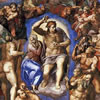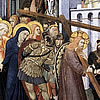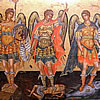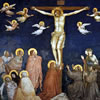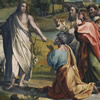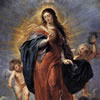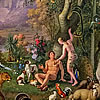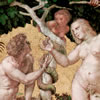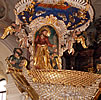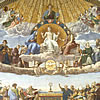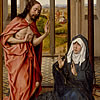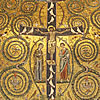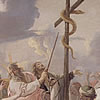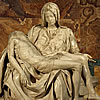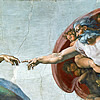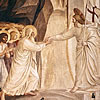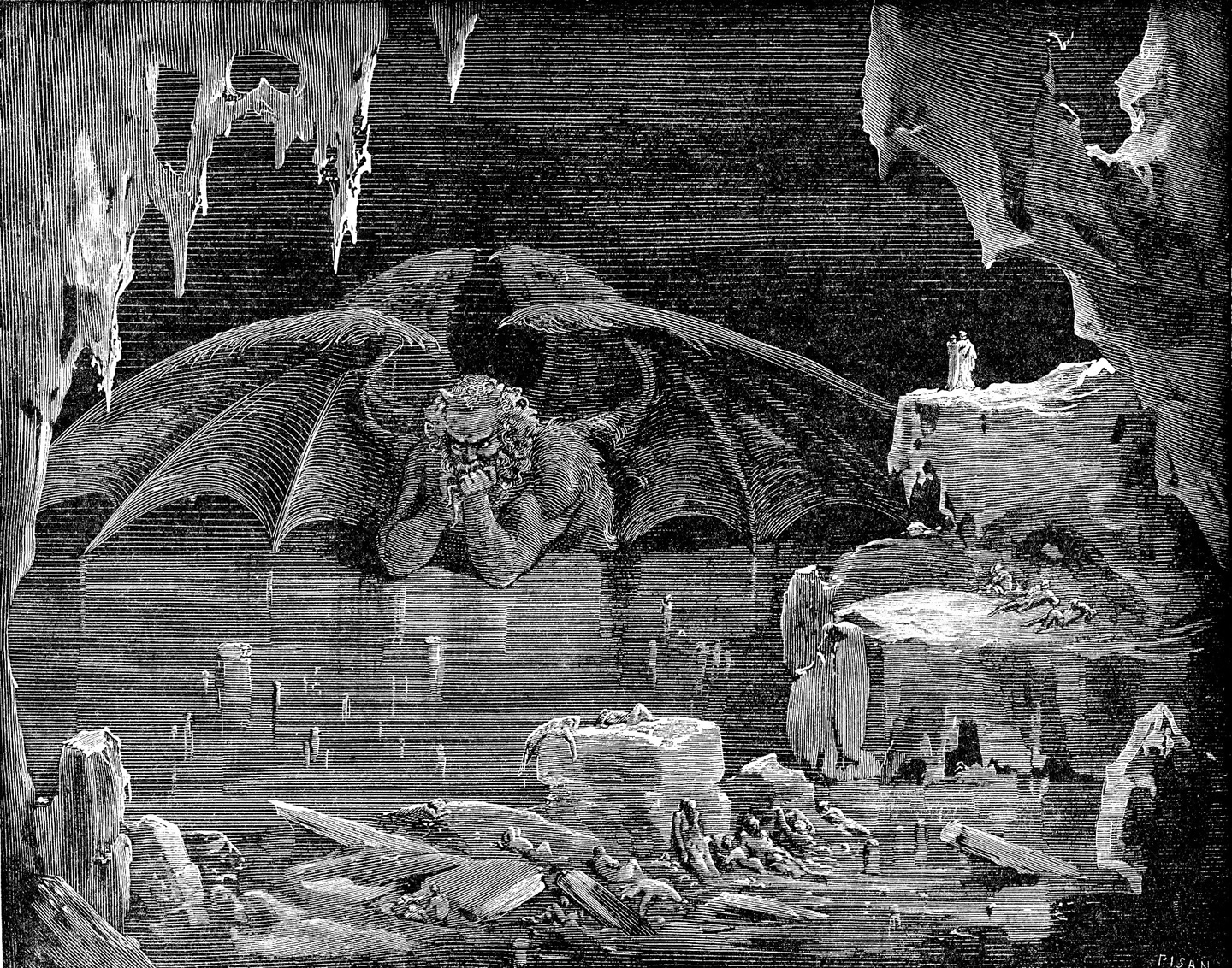

Dante's Inferno
The Divine Comedy by Dante Alighieri has been illustrated by many artists since it was finished in 1321, but the ones that linger on are those done by Gustave Dore in 1861. They are engravings, which he funded himself because there was a lack of investors. The engraving above is of Satan in hell as described by Dante.
In this scene, Virgil leads Dante into the ninth circle of hell. They approach what seems to be a gigantic windmill, but as they come closer Dante realizes it is Satan who is waist-deep in ice. Every time he flaps his enormous wings, it produces a breeze that brings hell into new levels of sub-zero temperatures. They go closer without Satan noticing them; so close in fact that they see that he has three faces. All of his eyes are weeping and each of his three mouths is chewing on Judas, Brutus, and Cassius.
The depiction of hell as freezing, instead of burning, is what makes the Divine Comedy interesting. It is not Dante just trying to be different but, in fact, has theological overtones. Hell is a place where there is no love for others. The citizens of hell are “incurvatus in se” (curved inward on themselves) so that no warmth of love exists except self-love. Dante depicts this by describing Satan so self-absorbed that he doesn’t even notice Virgil and Dante approaching him. The human souls in hell never learned to love others during their lifetime, thus, they spend the rest of eternity surrounded by the teeth-chattering coldness created by their own lack of self-giving love.
Another feature worth noting is the three faces of Satan, which also has a theological origin. Dante depicts Satan this way because the sin of Satan is that he mimics the Blessed Trinity. Catholics believe that the angels were given a command but Satan and his followers did not want to obey. By determining what they can and cannot do, they usurp God’s role for themselves. We can understand how Satan thinks by the way he tempted Eve:
For God knows that when you eat from it your eyes will be opened, and you will be like God, knowing good and evil.
Genesis 3:5
God is the basis of morality for he is all good and all love. So, to appropriate God’s role to determine what is good and what is bad is what every sin consists of. The only way we can be like God is by conforming to him, not by becoming another god.
There is a consensus among theologians that when Satan gave his irrevocable non serviam (“I will not serve”) a voice rang out from the choir of Archangels and rebuked him: “Who is like unto God?” It was St. Michael, and that is what his names means. It was meant to put Satan in his place by asking, in today’s language: “Who do you think you are? God?” (Angels have infused knowledge, so there is nothing new they can add to what they already know to change their minds. That is why their decisions are “irrevocable.”)
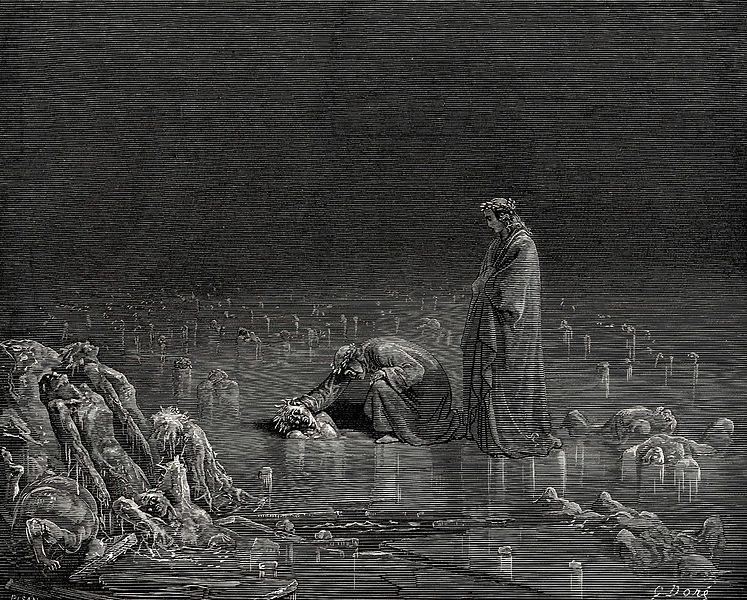
From Dante’s depiction of hell, it is a place where every citizen is his or her own god. Everything centers around himself or herself. They are frozen in place because there really no need to interact with others since each of them desires only to satisfy, serve, and find joy in himself or herself. That, that is what makes hell very cold indeed.



